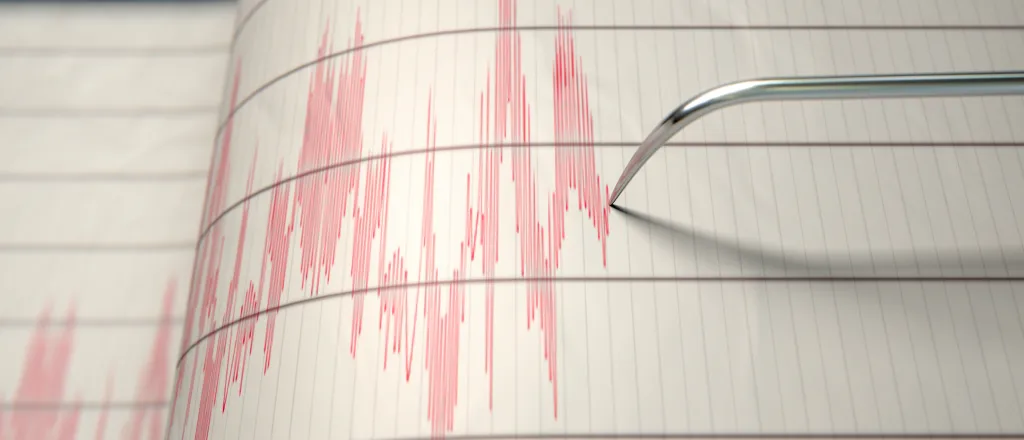
3 powerful earthquakes strike Afghanistan in one week – here’s how people around the world prepare for disasters
© iStock - allanswart
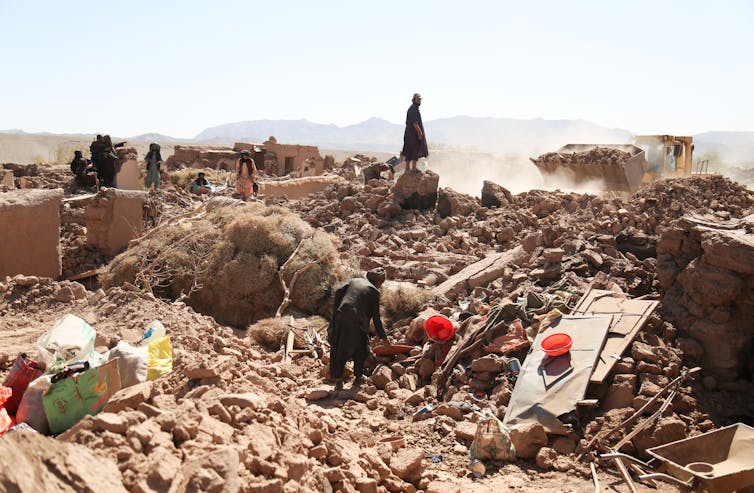
John van de Lindt, Colorado State University
Herat, in western Afghanistan, experienced a 6.3 magnititude earthquake on Oct. 11, 2023 – following two more earlier in the same week.
The mountains of Afghanistan are especially prone to earthquakes, but the truth is that earthquakes, flooding and hurricanes can happen anywhere. Nowhere is the risk zero.
But humans can make good decisions to lower the odds of hazards turning into disasters. Technology can help determine where to make investments to save the most lives.
The terrible devastation caused by the three 6.3 magnitude earthquakes in Afghanistan is the result of the presence of centuries-old historic buildings and the continued use of old construction methods, such as clay bricks and unreinforced masonry. These building materials are prevalent worldwide, particularly in developing countries.
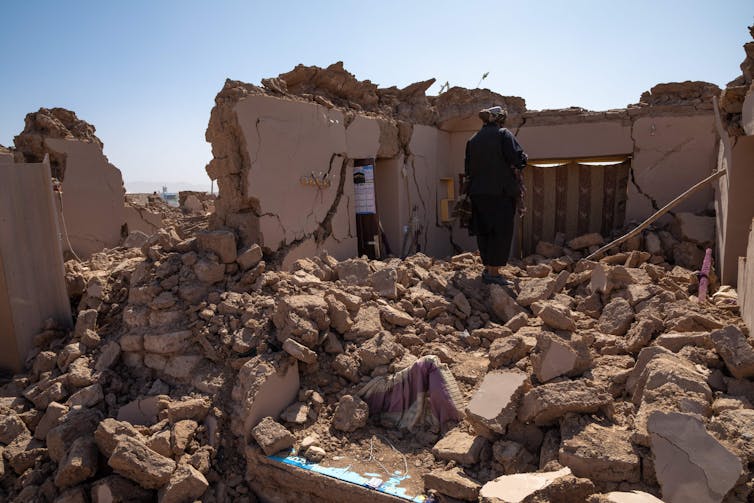
Engineers like me tend to focus on tangible decisions related to how buildings are constructed – for example, the amount and location of steel reinforcement. Over the last several decades, I’ve conducted the world’s largest shake table tests, placing a full-size apartment building on a platform that simulates seismic activity, and I’ve led teams of experts to investigate earthquakes around the world. But devastation – like we are seeing in Afghanistan now – continues.
Each disaster underlines the need to make our homes, offices and schools safer and more earthquake-resilient. But retrofitting buildings is expensive – and that cost represents a daunting challenge for developing nations like Afghanistan, Morocco and Syria – all three of which were devastated recently by major earthquakes. It is also challenging in developed nations like Turkey, Japan and the United States.
And yet, I am optimistic because I know thousands of engineers around the world are working and collaborating to make earthquakes less deadly.
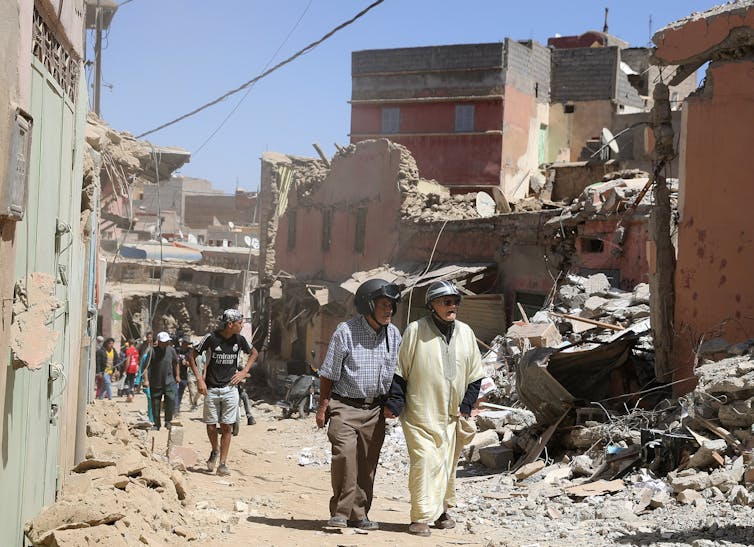
How earthquakes devastate buildings
Before we can discuss how to make people safer in earthquakes, it helps to understand the forces at work during these destructive events.
The extent of the damage done by an earthquake is determined by several factors, including magnitude – or how much energy the earthquake releases from its fault; depth of the fault and how far the building is from the epicenter of the quake.
An epicenter is the location on the surface of the Earth above the fault. Essentially, it is ground zero for the quake, where shaking is most intense and buildings are more likely to collapse.
If the columns and walls of a multi-story building are not stiff and strong enough to resist the forces of an earthquake, gravity takes over. The building usually collapses at the bottom floor level, causing the stories above to follow. Anyone inside can be trapped or crushed by falling debris. Stopping this requires significant investment, modern design codes and code enforcement. There are always challenges – but that doesn’t mean there haven’t been some success stories.
California plans ahead
Consider the city of San Francisco. More than a decade ago, this densely populated Northern California city realized it had thousands of apartment buildings with parking at the ground level. These are known as “soft-story” buildings and are more prone to collapse because they lack the strength and stiffness of reinforcing at the ground level. Many are likely to collapse in a moderate-to-major earthquake, while many more would require months to repair.
Through a self-study completed in 2010, San Francisco recognized that even if nobody was killed or injured in an earthquake, damage to these multi-unit residential buildings would result in a significant number of people losing their homes and leaving the city, changing its character forever. In 2013, the city began a mandatory retrofit program. So far, more than 700 soft-story buildings have been retrofitted. Federal grants of up to US$13,000 that became available in early 2023 are expected to accelerate this progress.
Los Angeles followed suit in 2015, passing a law that required retrofitting of both soft-story wood-framed and older concrete buildings prone to collapse. As of 2023, 69% of soft-story buildings in LA had been retrofitted. Progress on the concrete structures has been slower but is moving ahead.
Retrofitting a multi-unit apartment buildings in California costs between $60,000 and $130,000 – but the investment for a typical single-family home in the U.S. starts as low as $3,000.
Communities outside the U.S. have also built back better after earthquakes.
In 2005, Kobe, Japan, was rocked by a major earthquake that resulted in more than 5,000 fatalities and $200 billion in damage. As the city rebuilt, officials took the opportunity to improve their building code using updated strengthening and stiffening techniques.
Christchurch, New Zealand, was devastated in 2011 by two earthquakes that destroyed much of the downtown area. While many buildings didn’t collapse – a sign that the building code worked to some degree – many were damaged beyond repair. Demolishing them presented an opportunity to focus on resilient construction.
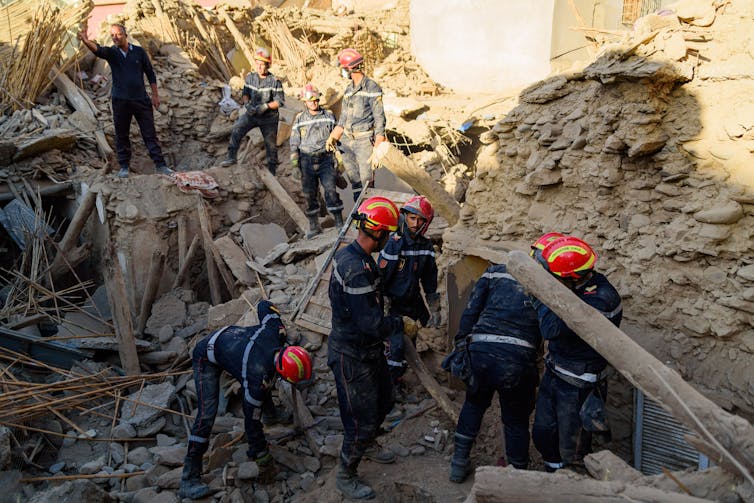
Focusing efforts
So how can people and governments figure out where best to invest to decrease our exposure to natural hazards?
The center I co-direct brings together specialists from 14 universities to determine how to measure a community’s resilience to natural hazards to enable them to plan for, absorb and recover rapidly from hazards. A policy directive during the Obama administration resulted in funds being focused on improving resilience throughout the U.S.
To improve resilience, we have to be able to quantify and measure it. To do this, we’ve developed a computer model called IN-CORE that communities can use to measure the short- and long-term effects of “what if” scenarios on their households, social institutions, physical infrastructure and local economy. Each interacting algorithm that makes up the model is based on scientifically rigorous research documented in the teams’ almost 200 peer-reviewed publications over the last eight years. Our system allows stakeholders to make resilience-informed decisions and measure the impacts on vulnerable populations. For example, we know that it is vital that social institutions such as schools and hospitals remain intact after a disaster.
One example of utilizing IN-CORE is the center’s engagement with Salt Lake County, Utah. The county is planning for a major earthquake – an event that is inevitable according to experts from the U.S. Geological Survey. Understanding where investment will have its biggest impact is critical because time and money are limited. Our system will help Salt Lake County determine which building retrofits will provide the most return on investment based on physical services, social services and economic and population stability.
One goal of the IN-CORE Project is to assist communities recently identified by the Federal Emergency Management Agency, or FEMA, as Community Disaster Resilience Zones. These are areas in the U.S. most at risk from the effects of natural hazards and climate change.
More broadly, we plan to partner with communities and regions worldwide, always staying focused on ensuring socially equitable solutions. For example, as recent earthquakes in Morocco and Afghanistan show, it is important to consider not just urban centers, but rural communities that often suffer a great deal of loss.
This article was updated to include details from the Afghanistan earthquakes in October 2023.![]()
John van de Lindt, Professor of Civil Engineering, Colorado State University
This article is republished from The Conversation under a Creative Commons license. Read the original article.

















